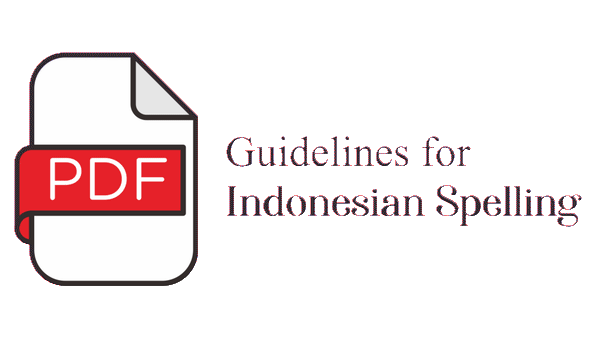DETERMINAN EFISIENSI NELAYAN DI INDONESIA: SEBUAH ANALISIS STOCHASTIC FRONTIER
Abstract
Pemerintah Indonesia saat ini sangat serius memberantas penangkapan ikan ilegal di wilayahnya. Pengurangan penangkapan ikan secara ilegal oleh kapal asing di Indonesia berarti pengurangan persaingan yang signifikan antara nelayan asing dan domestik. Studi ini berpendapat bahwa, dengan menurunnya kompetisi dengan nelayan asing, nelayan domestik harus mampu meningkatkan jumlah tangkapan. Penelitian ini bertujuan untuk mengetahui tingkat efisiensi teknis dan juga faktor penentu inefisiensi nelayan di Indonesia. Penelitian ini menggunakan fungsi produksi yang meliputi usaha nelayan dan capital sebagai input. Analisis stochastic frontier digunakan untuk menguji faktor penentu inefisiensi pada produksi ikan di antara 156 nelayan di seluruh Indonesia. Hasil penelitian menunjukkan bahwa produksi ikan sangat bergantung pada jumlah awak dan jenis kapal sesuai yang diharapkan. Dalam hal inefisiensi, penelitian ini mengklaim bahwa kepemilikan telepon seluler merupakan penentu signifikan untuk mengurangi inefisiensi, diikuti oleh kepemilikan kapal dan nilai alat tangkap. Temuan tersebut menyiratkan bahwa koordinasi antara nelayan, kepemilikan kapal dan alat penangkap ikan penting untuk efisiensi nelayan.
Determinants of Fisher’s Efficiency in Indonesia: A Stochastic Frontier Analysis
Indonesian government has been recently fought against illegal fishing in the territory. Reduction in illegal fishing means a significant reduction in competition among foreign and domestic fishers. This study suggests that domestic fishers must be able to increase their fish capture as the competition with foreign fishers decreased. This study aims to identify technical efficiency level as well as to identify the determinants of inefficiency among fishers across Indonesia. This study utilizes a production function including fishers’ efforts and capital as input. A stochastic frontier analysis is used to examine the inefficiency determinants on fish production among one hundred and fifty six fishers across Indonesia. The result indicated that fish production depended significantly on the number of crew and expected type of boat. This study claims that cell phone is a significant determinant to reduce inefficiency, ship ownership and the value of fishing gear respectively. These finding implies that coordination among fishers, boat ownership and fishing gear are necessary for the fishers’ efficiency.
Keywords
Full Text:
PDFReferences
Aigner, D., Lovell, C. K., & Schmidt, P. (1977). Formulation and estimation of stochastic frontier production function models. Journal of econometrics, 6(1), 21-37. Doi: 10.1016/0304-4076(77)90052-5.
Badan Pusat Statistik. (2015). Jumlah Rumah Tangga Perikanan Tangkap Menurut Provinsi dan Jenis Penangkapan, 2000-2015. Sumber: https://www. bps.go.id/statictable/2014/01/10/1709/jumlah-rumah-tangga-perikanan-tangkap-menurut-provinsi-dan-jenis-penangkapan-2000-2015.html
Coelli, T. & Battese, R.D.G. (1998). An Introduction to Efficiency and Productivity Analysis.
Coelli, T. J. (1996). A guide to FRONTIER version 4.1: a computer program for stochastic frontier production and cost function estimation (Vol. 7, pp. 1-33). CEPA Working papers.
Badan Pusat Statistik. (2017). Jumlah Rumah Tangga/Perusahaan Perikanan Tangkap Menurut Provinsi dan Jenis Penangkapan, 2000-2015. Sumber: https://www.bps.go.id/ statictable/2014/01/10/1709/jumlah-rumah-tangga-perikanan-tangkap-menurut-provinsi-dan-jenis-penangkapan-2000-2015.html.
Duy, N. N. & Flaaten, O. (2016). Efficiency analysis of fisheries using stock proxies. Fisheries Research. Elsevier B.V., 181, pp. 102–113. doi: 10.1016/j. fishres.2016.04.006.
Daw, T.M., J.E. Cinner, T.R. McClanahan, K. Brown, S.M. Stead, N.A.J. Graham, & Maina, J. (2012). To Fish or Not to Fish: Factors at Multiple Scales Affecting Artisanal Fishers. Readiness to Exit a Declining Fishery. PLoS ONE 7: e31460. doi:31410.31371/journal.pone.0031460.
Esmaeili, A. (2006). Technical efficiency analysis for the Iranian fishery in the Persian Gulf. ICES journal of marine science, 63(9), 1759-1764. Food and Agriculture Organization (2018) The State of World Fisheries and Aquaculture 2018. Rome. Sumber: www.fao.org/3/i9540en/I9540EN.pdf.
Fousekis, P. & Klonaris, S. (2003). Technical efficiency determinants for fisheries: a study of trammel netters in Greece. Fisheries Research, 63(1), 85-95.
Ghee-Thean, L., I.A. Latif, & Hussein, M.A. (2012). Application of Stochastic Frontier and Data Envelopment Analyses on Trawl Fishery. Journal of Applied Sciences, 12(1), 48-55.
Hapsari, T. D., & Fitri, A. D. P. (2016). Technical and Economic Analysis of Modified Payang Fishing Gear in the Fishing Port of Tawang Beach in Kendal District, Indonesia. Aquatic Procedia, 7, 254-264.
Hutubessy, B. G., Mosse, J. W., van Zwieten, P. A. M., & Hayward, P. (2014). Towards an ecosystem approach to small island fisheries: A preliminary study of a balanced fishery in Kotania Bay (Seram Island, Indonesia). Journal of Marine and Island Cultures, 3(2), 98-105.
Kim, D. H., K.H. Lee, B.S. Bae, & Park, S.W. (2011). Productive efficiency of the sandfish Arctoscopus japonicus coastal gillnet fishery using stochastic frontier analysis. Fisheries Science, 77(1), 35-40.
Kompas, T. & Che, T. N. (2005) Efficiency Gains and Cost Reductions from Individual Transferable Quotas: A Stochastic Cost Frontier for the Australian South East Fishery. Journal of Productivity Analysis, 23 (3), 285-307.
Lokina, R. B. (2009). Technical efficiency and the role of skipper skill in artisanal Lake Victoria fisheries. Environment and Development Economics, 14(4), 497-519.
Lwoga, T. E., Stilwell, C., & Ngulube, P. (2011). Access and use of agricultural information and knowledge in Tanzania. Library review, 60(5), 383-395. RAND. (2015). RAND IFLS-5 Survey Description. Sumber:https://www.rand.org/labor/FLS/IFLS/ ifls5.html.
Ruttan, L.M., & P.H. Tyedmers. (2007). Skippers, spotters and seiners: analysis of the “skipper effect” in US menhaden (Brevoortia spp.) purse-seine fisheries. Fisheries research, 83(1), 73-80.
Samosir, A.P., R.H. Tenrini, & Nugroho, A. (2014). Analisis potensi penerimaan negara bukan pajak sektor perikanan tangkap 1, Jurnal Borneo Administrator, 10(2), pp. 143–166.
Sharma, K. R., & Leung, P. (1998). Technical efficiency of the longline fishery in Hawaii: an application of a stochastic production frontier. Marine Resource Economics, 13(4), 259-274.
Squires, D., & Vestergaard, N. (2013). Technical change in fisheries. Marine Policy, 42, 286-292.
Tran, N., Rodriguez, U. P., Chan, C. Y., Phillips, M. J., Mohan, C. V., Henriksson, P. J. G., ... & Hall, S. (2017). Indonesian aquaculture futures: an analysis of fish supply and demand in Indonesia to 2030 and role of aquaculture using the AsiaFish model. Marine Policy, 79, 25-32.
Yuniarta, S., van Zwieten, P. A., Groeneveld, R. A., Wisudo, S. H., & van Ierland, E. C. (2017). Uncertainty in catch and effort data of small-and medium-scale tuna fisheries in Indonesia: Sources, operational causes and magnitude. Fisheries research, 193, 173-18
DOI: http://dx.doi.org/10.15578/jsekp.v14i1.6868
Indexed by:
-------------------------------------------------------------------------------------
Published by
Research Center for Marine and Fisheries Socio-Economic
in collaboration with
Indonesian Marine and Fisheries Socio-Economics Research Network

This work is licensed under a Creative Commons Attribution-NonCommercial-ShareAlike 4.0 International License.



















